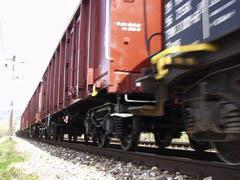
Monika Heiming is Secretary General of the European Rail Freight Association. Jan Möllmann is Secretary General of the European Passenger Transport Operators.
Seven years after its adoption, the First Railway Package is once again the focus of attention. Earlier this year the European Commission sent ‘letters of infringement’ to 24 Member States, seeking clarification on progress with implementing the current legislation. At the same time it started preparing for a full recast of the package and market access regulations during 2009.
PricewaterhouseCoopers was commissioned to carry out a ‘sector enquiry’ which will provide a key input to the recast. All players were invited to rank the biggest obstacles to market entry and competition, according to their importance for their business and to consider whether the current legislation, if implemented correctly, would remove them fully.
On November 7 the consultants presented the first results. 20% of responses came from regulatory bodies, 17% from incumbent operators, 13% from holding companies, 11% from new entrants and 7% each from infrastructure managers, member states and European associations. PWC adopted a multiple linear regression model to show the correlation between liberalisation and performance.
The four most important obstacles were considered to be the weak financial situation, lack of investment, different degrees of implementation of the legislation and the quality of the infrastructure. Incumbent railways and integrated infrastructure managers, represented by CER, welcomed the enhancement of the rail sector’s financial situation as ‘very desirable’.
For ERFA and EPTO, representing the private-sector freight and passenger operators respectively, the issue of financing was also important, but for different reasons. Their members’ financial burden is increased excessively by the obstacles that are still in place. In a move which is also supported by CER, they would like to see the EU establish a ‘rescue fund’ to support new entrants facing higher costs as a result of imperfect market liberalisation. Giving money only to the ailing incumbents would bring competition to an end immediately.
Further obstacles included the failure of some member states to separate fully the ownership of infrastructure managers from railway undertakings, abuse of dominant position, difficulty in gaining access to the regulatory body, charging of higher prices for new entrants and different track access agreements in each country.
Provision of non-discriminatory access to service facilities (such as terminals, maintenance workshops and marshalling yards) came last in the list of nine most desirable areas for improvement, even though this is seen as a serious obstacle by new entrants. The incumbents rejected the idea of any further regulation, whilst the various regulatory bodies felt that only ‘hard law’ would solve the problems of gaining access to service facilities.
A related problem is energy supply. For the private freight operators, fuel and electricity represent at least 25% of the costs charged to their customers. Faced with different supply regulations, and sometimes with the abuse of energy supply monopolies held by their competitors, they see the need for clear regulation as very important.
The PWC study is the third to be undertaken by the Commission into the problems with rail market liberalisation since 2005. Whilst the first two identified an extensive list of problems, ERFA and EPTO feel that there are limits to using mathematical models to prove political objectives.
Based on these findings, the problems faced by incumbents would be ranked as much more important than those of new entrants. Instead of further liberalisation, the agenda would be all about further financial support for infrastructure managers and incumbent operators. Given the mix of respondents, the bias in the results is inevitable. It is not surprising that the incumbent majority would resist any moves to complete the liberalisation process, as they and their state owners have been doing for the past 17 years.
A political agenda based on the study findings would give a clear signal to squeeze out all non-incumbent operators. With a rapid consolidation currently taking place, and the new entrants having an average market share of 10% or less, this would be the wrong signal to the wrong group of actors.
The rail industry is struggling to bring better quality, competition and choice to customers across Europe, increasing the volumes of freight carried by both new entrants and incumbents. EPTO and ERFA strongly urge the Commission to reconsider the validity of the study findings and ensure that the recast is better aligned to its objectives: creating a viable EU railway market and ensuring fairer, clearer and more transparent rules.














